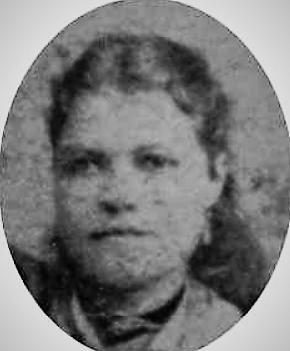In his storm, Peter walked on water, and Noah was carried in an ark when the great flood engulfed the earth. In his storm, Nephi was given strength to overcome his brothers’ oppression, and the fishermen awoke the sleeping Lord and were saved as waves threatened to overtake them. It is through great winds and howling storms that the Jaredites were carried to the promised land in tightly crafted barges.
But, when Jonah was storm-tossed and lost out at sea, he was thrown into the cold, unforgiving depths and was swallowed by a great fish.
It would be so tempting to read these stories and believe they testified of a God who only saved individuals who appeared to be picturesque disciples; those who followed the word of God weathered the storm, while Jonah was completely swallowed whole.
But I believe each of these stories testify of a loving Father in Heaven who meets each of His children in their storms and prepares the answers they need because our God is One who does not give up on us.
He didn’t leave Peter, Noah, Nephi, the Jaredites or Jonah to flounder and fail. He stretched forth his hand, helped build an arc, sent fortified strength, used the wind to propel them forward, and sent the right fish to the right place and the exact moment it would be needed. There were different answers for each child, all testifying that regardless of imperfect circumstances, our Savior assists in the saving.
When we, or our loved ones feel as though we are tossed upon the sea with no end in sight, we can look to these people and remember there is never a heart too broken, a storm too dismal, or a problem too big for Him.
Margarett Henrietta Meads Rasmussen also experienced a life full of stormy days and unexpected answers. Margarett was of Black American heritage and grew up in the Salt Lake Valley after her mother, a former enslaved person, and her father moved to the valley to worship with fellow saints.

She lived with her parents in the Salt Lake City Eleventh Ward downtown. There, she met her husband, Hyrum Hans Rasmussen.
Margarett started building her family soon after her marriage, but shortly before she welcomed her eldest child, her mother passed away in 1881. As an only child, the passing of her mother left her with very few family members by her side as she began raising her children, Hyrum Lewis, Oscar Joseph, Franklin Henry, and Florence Rebecca.
Florence lived for two months before she passed away in 1886 from an unknown cause. This brought grief and sorrow into Margarett and Hyrum’s relationship that may have contributed to the challenges they faced in the future. They soon had two more children, Lillian Bertha, and Maggie Viola, having a total of six babies altogether.
Not long after baby Maggie was born, Hyrum left Margarett with no explanation to anyone. It is as though he vanished from the Salt Lake Valley and never was seen again. After losing her mother, her precious baby, and now her husband, I would imagine Margarett carried grief and sorrow that would have been insufferable at times. She now had five children to raise all on her own, all of them under the age of twelve.
Hyrum leaving the family was nothing short of devastating. Divorce causes a sorrow unlike anything I have ever known, when coupled with the fact it was not at all her decision, I am sure she lived in a state of shock for a long time. I feel a kinship with her as I remember the early days when my first husband chose to leave our marriage. Though it was not the same abandonment Margarett faced, the fallout gives me empathy for her plight.
It was nearly impossible to eat, each flavor too intense to process when my mind was overwhelmed by so much already. Sleep brought nightmares and with each morning I was reminded that all I had feared through the night was true. It was difficult to think clearly, keep commitments, remember all that needed to be done, and I felt I had failed my four children, ages eleven and younger, in my attempts to provide a loving eternal family for them.
When I think of Margarett facing something similar, with her mother deceased and her options for employment much lower than mine were at the time, I can almost instantly feel the anxiety and sadness that must have coursed through her veins and settled in the ever-growing lump in her throat.
Thankfully, Margarett’s father, Nathan and his new wife allowed Margarett to move in with them while she raised her young family. I am sure the shame and embarrassment of being left alone with all those children weighed heavily on Margarett. She probably wondered if she had failed her children by choosing a man who left them fatherless.
An indication of her grief and embarrassment may be that she marked herself as a widow going forward instead of admitting to the abandonment she had faced. She also changed the spelling of her last name, creating distance between herself and Hyrum and maintaining a connection between her children who adapted to her version of the spelling in their adulthoods.
She remembered the skills her mother had taught her as a young child and used them to earn a small living as a dressmaker. I would love to see the pieces of art she probably hand-crafted for each of her clients. Each stitch would be carefully placed, one by one, to form each dress that represented not simply fabric shaped together, but her ability to provide for herself and her children.
Margarett lived with her father and stepmother until 1910 when she fell horribly ill. She was completely blind and suffered from a form of spinal inflammation or injury known as chronic myelitis. These illnesses made it impossible for Margarett to live independently and ultimately, the spinal-related issues caused her death on November 1, 1910. Margarett is buried in the Salt Lake City Cemetery next to her son, Hyrum who passed away fifteen years after her in 1925.
Margarett reminds me of Jonah swallowed in the great fish. As the winds and the waves crashed against her through loss, it seemed more trials followed in the form of loneliness, illness, and an early death. A quick look into the pages of her story could leave us wondering if her refuge from the storm ever came. But like Jonah and others who found themselves in trying and difficult times, the Lord sent Margarett the respite she needed to know Him, love Him, and rely on Him regardless of all the tumult swirling around her.
Others in similar situations may have found relief through second marriages, increased wealth, or sound health. This was not the saving Margarett received, but that certainly did not mean she was forgotten. Her relief came through compassionate family members, hard work, and a resolve to live the gospel of Jesus Christ.
Margarett could have easily looked at those around her and seen families that appeared to be picture-perfect and been tricked into believing that the Lord had forgotten her. She could have thought: “I did everything I was asked, yet still here I am, completely forgotten.” I know that when my life has taken hard turns, I have been tempted to think the same thing. That is why I believe Margarett must have come to know her Savior who kept His true promises. Not the promises we impose upon Him, like well-planned lives or ease of circumstance, but the promises written in scripture.
Like Elder Uchtdorf once taught: “We have the faithful promise of God that He will neither forget nor forsake those who incline their hearts to Him.” (You Matter to Him, October 2011, General Conference.)
She must have known about how Jesus meets us on our right hand and on our left. She likely felt Him when He kept His promise that He would not leave her comfortless. She knew what it felt like to knock, and it be opened and to ask and receive. She learned many times over that while trial and hardship are a part of life, Jesus Christ would always keep His true promises of healing, compassion, and comfort made possible through the gift of His Atonement.
I believe that through her storms she came to know Him and He must have been the reason she stayed. Margarett’s story is an example to me that discipleship is not always going to be a perfect cookie-cutter existence that aligns with the plans we may have for ourselves and the lives we admire of others.
Sister Margarett can remind each of us that as members of God’s eternal family, we will all face stormy seas, and we will all experience the relief of divine rescue. The beauty of that rescue will be shown through uniquely individualized answers, personalized inspiration, and the loving grace of Jesus Christ.
The author wishes to thank the J. Willard Marriot Library and Century of Black Mormons for the resources that contributed to this article.


